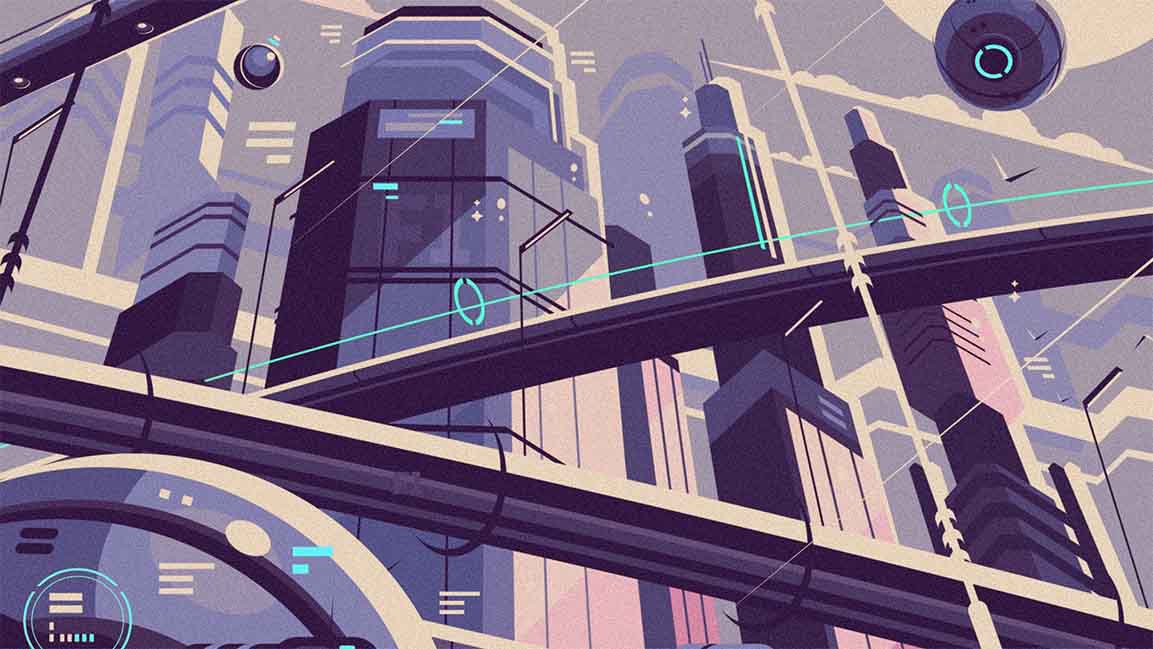- | 9:00 am
What is the future of cities in the Middle East? Experts weigh in
Cities of the future need to adapt and evolve with changing times, experts say.

Imagining future cities has long been a favorite activity for architects and urban planners. And technology is often central in the schemes to provide a neat solution to society’s problems – to make cities smarter, more resilient, and more sustainable.
With evolving technologies promoting efficiency and the quality of services and living, cities, workplaces, and even homes have significantly transformed. AI, big data, the Internet of Things (IoT), and aerial transportation are reshaping our way of life. This transformation is becoming evident in the Middle East as it shifts toward environmental sustainability.
“We’re at a juncture of growing up from smart cities into the digital transformation of governments. You can see a bit of a power transfer from the technologists to the urbanist or public administrators, who have subject matter expertise on how the government runs. This shift is much more intentional,” says Jason Whittet, Head of cities at AWS, adding that development projects today are more than just ad hoc, one-off projects.
HUMAN-CENTERED DESIGNS
The pandemic has reinforced that humans must be at the center of city designs. It has profoundly disrupted what we thought we knew about cities. It has further sharpened existing problems in how we physically live and work together.
An identifiable shift in how future cities are being conceived is they are human-centered. Saudi Arabia is at the forefront of building a futuristic, cognitive city – The Line in NEOM – that will run on renewable energy.
The futuristic city has been designed as an alternative to the conventional circular urban layout. Saudi Crown Prince Mohammed bin Salman hailed it as a “model for nature preservation and enhanced human livability.”
At the Impact Council annual meeting, one of the panel discussions focused on how cities of the future need to be more human and nurture a strong sense of community. Experts discussed how future cities can leverage data to optimize resources.
Speaking at the Impact Council, Yousef Khalili, President of Professional Services at Tonomus, the tech company powering the world’s first ecosystem of cognitive technologies at NEOM, said, “Having a human-centric approach helps to animate the whole city around humans and not the other way around.”
Architects and urban planners in the region and globally are designing sustainable and smart cities and laying the groundwork for resilient cities.
Besides NEOM, key projects in the kingdom which emphasized the integration of sustainable development goals into the national planning process include the Qiddiya Project, King Abdullah Financial District, and Amaala. Masdar City in Abu Dhabi is powered by renewable energy sources as well.
CULTURE SUPPORTING INNOVATION
But how do cities innovate? Though every city is unique, the culture that supports innovation connects them all.,
“The cities doing the most typically have a culture supporting innovation. With executive support, there’s a clear vision for where they’re going and how they’re going to get there,” says Whittet, adding that one of the reasons why the world is looking forward to NEOM is because “it can be an exporter of thought leadership on what you can do when you have a supportive culture.”
Having bespoke solutions, not one-size-fits-all, is a must to create spaces in cities that are more connected to nature.
Cities are also on a journey from open data to open wisdom. In the future, to make a prediction, cities will have a data trust, an agency responsible for driving the data agenda, and where all the data lives.
“If we are going to envision our cities as regenerative cities, we need to use all the available tools to measure the outcome of data. For example, when it comes to simple decisions that can impact our health, like opening the window if the outdoor air quality is good,” says Amira Ayoub, Head of MENA Programmes, World Green Building Council, adding that “smart city solutions could be key in measuring what we have.”
NEED FOR SUSTAINABLE MODELS
“Combating climate risks, such as flooding and high-magnitude weather events, requires holistic, impactful, and scalable, resilient solutions,” said May Faraj, Senior Advisory Director – Environment & Sustainability, WSP Middle East.
Be it in the form of sponge or 15-minute cities, experts say cities of the future need to be inclusive, sustainable, and resilient. Cities must adapt and evolve with changing times.
According to the Aritco Report 2022, regenerative models look to reintroduce green spaces to cities and enable spaces in our homes and neighborhoods where nature can re-establish its presence. Our homes, offices, neighborhoods, and cities will all need to be adapted, reconfigured, and, in some cases, completely reinvented if we’re to stand a chance of meeting climate change goals.
Across the region, innovators are stepping forward to fill the gaps with ideas, products, and services to address the sustainability concerns surrounding cities. The goal is to shift to a circular economy focused on recycling, renewables, and community participation.
“Smart cities can save the world if they are one ecosystem with no boundaries between nature and cities. If we are connected more to nature, we will respect nature, and we will take care of it,” adds Ayoub, “If we have a balance between what we want and how smart cities and technology can help us, we can bridge the gap for a more regenerative future.”
Imagining cities helps us understand how we want our future lives to look. And by doing so, we will be better positioned to rethink the shifts of liveable spaces embedded with renewable energy resources, green vehicles, and productive nutrient zones.








































